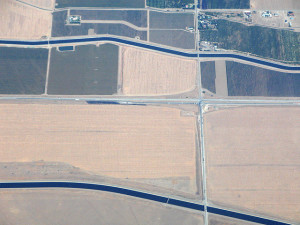Does anyone know where we can see our grades at?
4.1 Hagia Sophia
Hey y’all Pete here. The purpose of this post is to tell you a little about the architectural features of Hagia Sophia. These features were added onto the structure during it’s time as a Mosque from 1453-1935.
Prior to 1481 a small minaret was built above the stair tower on the southwest corner of the building. Later, another minaret at the northeast corner of the building was built by the succeeding sultan, Bayezid ll (1481-1512). After the Earthquake of 1509, one of the minarets collapsed and near the middle of the 16th century two diagonally opposite minarets were built at the east and west corners of the building in place of the old ones. The first minaret by the southwest corner was built from red brick while the other three were built from white limestone and sandstone. The two larger minarets were built by Sultan Selim ll and designed by Mimar Sinan, the famous Ottoman architect. During the 16th century, Sultan Suleiman the Magnificent returned to the structure with two massive candlesticks from his conquest of Hungary. They placed these on either side of the mihrab. In 1740 under Sultan Ahmed lll, a Sidirvan, fountain for ritual ablutions, was added to the structure. A new mihrab was also added at this time. During the Renovation of 1847 the minbar and mihrab were renovated and the two minarets were also set to equal heights.
Observation, Quote, and Question

Highway I-5 and irrigation canals in California’s Central Valley. Photo by Doc Searls, and used under a Creative Commons license.
Module 7 is simply a week for catching up and reflecting—though I am asking you to do one new thing.
We’re about to head into a unit on water resources—and more specifically how different cultures have built systems that deliver water to cities and farms. I’d like you to leave one each of the following in a comment on this post:
- An observation about water and culture. This might be about its cleanliness, availability, transport, the fairness of its distribution, how it should be allocated, or anything else relevant to how humans collect, transfer, and use water. (These are all engineering issues, of course.)
- Find an article, blog post, report, or other text about water—again any of the topics mentioned in #1 above are fair game. (The article doesn’t have to be related to your observation for #1.) Pull out an interesting quote from the article and share it below. Leave a link to the article so we can find it.
- One question about water related to its engineering—again, any of the topics mentioned in #1 are fine.
That’s three things total: one observation, one question, and one quote.
Then, respond thoughtfully to three other people’s comments; they need not be people in your assigned group. (Also, as we move into the second half of the semester, we’ll be doing more group work outside of our assigned groups, so pay attention to who is saying smart things so that you can invite that person to work with you on a future project.)
I’ll be using your observations, quotes, and questions to shape our reading in modules 8, 9, and 10, so please select topics of interest to you.
I’ll leave a comment as an example.
- « Previous Page
- 1
- …
- 52
- 53
- 54
- 55
- 56
- …
- 102
- Next Page »